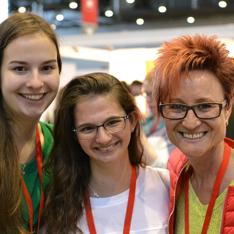S. Trapero-Asenjo1, S. Fernández-Guinea2, S. Fernández-Carnero1, S. Nunez-Nagy1
1University of Alcalá, Department of Nursing and Physiotherapy, Alcalá de Henares, Spain, 2Complutense University, Department of Experimental Psychology, Cognitive Processes and Speech Therapy, Madrid, Spain
Background: Motor Imagery (MI) is defined as the mental representation of the movement without motor output. MI practice refers to the mental repetition of motor acts primarily to improve motor learning and performance. It is increasingly used in a variety of sport and rehabilitation settings, as it is an accessible and effective tool if properly applied. This requires the ability to form mental images, which can be trained to achieve increasingly effective practices. For example, this improves as physical and mental practice times become more similar.
MI practice protocols are heterogeneous. Several studies have determined the number of repetitions or time needed for effective interventions. Approximately one month of training is needed, with 3 weekly 15-minute practice sessions. However, due to the different clinical contexts in which the physiotherapist works, this periodicity of sessions is only sometimes available. One study found that a single MI session could induce use-dependent plasticity, a mechanism underlying motor learning. However, we do not yet know whether an MI session could produce changes in the subjective capacity for MI and its temporal congruence.
MI practice protocols are heterogeneous. Several studies have determined the number of repetitions or time needed for effective interventions. Approximately one month of training is needed, with 3 weekly 15-minute practice sessions. However, due to the different clinical contexts in which the physiotherapist works, this periodicity of sessions is only sometimes available. One study found that a single MI session could induce use-dependent plasticity, a mechanism underlying motor learning. However, we do not yet know whether an MI session could produce changes in the subjective capacity for MI and its temporal congruence.
Purpose: The main objective was to explore whether a single series of MI practices improves subjective MI ability and temporal congruence in non-experienced imagers.
Methods: Thirty healthy volunteers (20.73 + 3.36 years; 9 males) and unfamiliar with the use of MI were recruited by non-probabilistic consecutive sampling. All subjects completed the Movement Imagery Questionnaire-3 (MIQ-3) twice (t1 y t2) to measure subjective MI ability in the external and internal visual, and kinesthetic subscales. At the same time as they completed the questionnaire, the experimenter recorded with a stopwatch the execution and imagery times of each MIQ-3 item according to the participants' start and end commands. The discrepancy values (|execution time - imagination time|) was then calculated to assess the temporal congruence of MI. The time elapsed from t1 to t2 was 25 minutes. The study was approved by the Ethics Committee of Research and Animal Experimentation of the University of Alcalá with code CEID2022/2/036.
Results: The mean time to complete the MIQ-3 was 12.2 minutes. Mixed factorial ANOVA for the subjective scores showed a significant main effect of subscale (F(2,58)=4.081, p<0.05, η2=0.045), and time (F(1,29)=8.565, p<0.01, η2=0.007), no interaction effects. Multiple comparisons indicated significant differences (p<0.05, d=0.3) in subjective scores between t1 (M=5.27+0.943) and t2 (M=5.43+0.99). Mixed factorial ANOVA for the discrepancy values showed a significant main effect of time (F(1,28)=20.827, p<0.01, η2=0.049), no subscale or interaction effects. Multiple comparisons showed significant differences (p<0.01, d=0.62) in discrepancy values between t1 (M=1.6+0.77) and t2 (M=1.29+0.66).
Conclusions: A single series of MI practices improves subjective MI ability and its temporal congruence in non-expert imagers. Future work should assess whether these changes are persistent in the long term, beyond 25 minutes, across all subscales and in different patient groups.
Implications: The positive results of this study could provide the basis for evaluating MI programmes with fewer sessions than those evaluated so far, which could be effective for implementation in rehabilitation settings where the periodicity of sessions is low.
Funding acknowledgements: This research received no funding. It derives from a thesis conducted thanks a predoctoral position at the University of Alcalá
Keywords:
Imagery
Practice guideline
Imagery
Practice guideline
Topics:
Professional practice: other
Neurology
Sport & sports injuries
Professional practice: other
Neurology
Sport & sports injuries
Did this work require ethics approval? Yes
Institution: University of Alcalá
Committee: Ethics Committee of Research and Animal Experimentation
Ethics number: CEID2022/2/036
All authors, affiliations and abstracts have been published as submitted.

